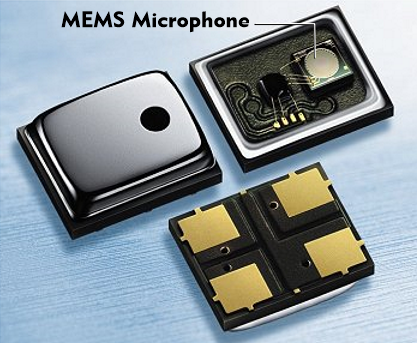MEMS microphone
Microsystems technology(MST) has enabled many product innovations, including miniaturized microphones, MEMS microphones, which are used in hearing aids, cell phones, smartphones, headsets, MP3 players, hands-free devices, laptops and camcorders. The focus of such developments that can be realized with microsystems technology is on space requirements and manufacturing costs.
MEMS microphones belong to the group of MEMS sensors. They work on the same principle as other microphones and convert sound pressure into electrical signals. The difference between MEMS microphones and traditional microphones is the small size and the manufacturing process. The conversion principle can be that of the crystal microphone, or that of the condenser microphone or electret microphone. In both, the sound pressure is picked up by an extremely thin, micromechanically manufactured membrane and the movement is converted piezoelectrically or capacitively into an electrical signal. In terms of design, MEMS microphones are mounted on a ceramic wafer together with an ASIC (Application Specific Integrated Circuit) and shielded against electromagnetic interference with a shield. Depending on the concept, the ASIC may contain the A/D converter and modulators for stereo signals.
The characteristic data of MEMS microphones are quite appealing. The power consumption is less than 1 mW, their size a few millimeters, the sensitivity about -30 dBFS (Decibel Full Scale), the signal-to- noise ratio above 60 dB and the distortion factor below 1 %.

